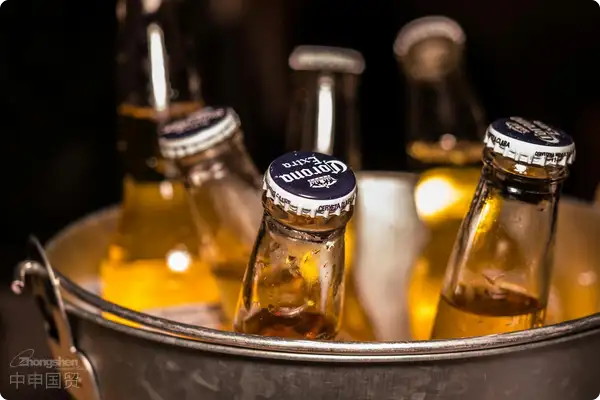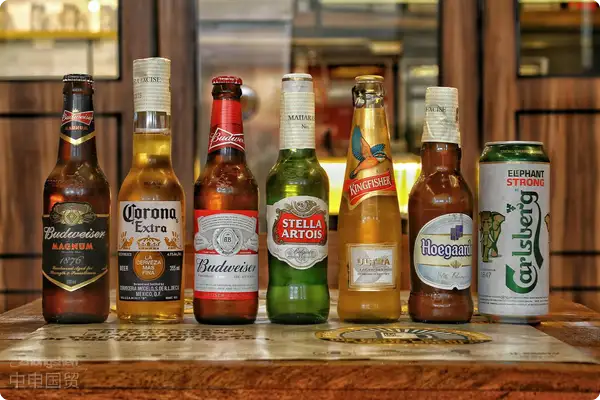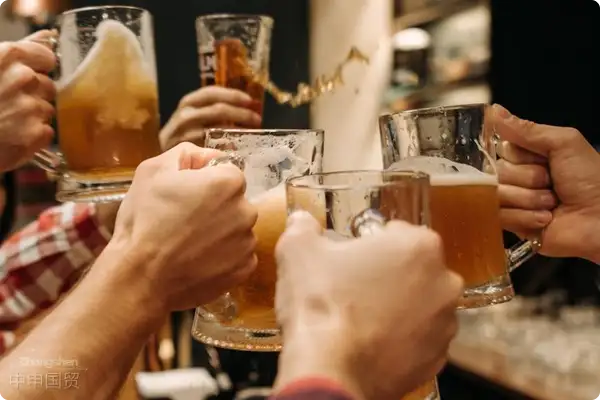- Shanghai Zhongshen International Trade Co., Ltd. - Two decades of trade agency expertise.
- Service Hotline: 139 1787 2118
Have you ever been confused by the complicated process of importing pastries? From clarifying the definition of pastries to complying with strict food safety standards, and then to the cumbersome import procedures, every link is crucial. Cakes and pastries are very common in our lives. But if you want to import these delicious foods from overseas, then you need to understand the definition of pastries, import safety standards, and the specific import process. Today, we will analyze in detail all the necessary steps for importing pastries, helping you easily meet the challenges and smoothly carry out import business!
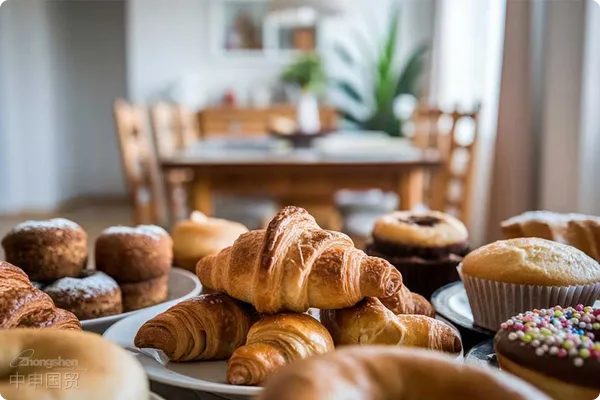
I. Definition of Pastries
Pastriesare foods made from one or several of the main raw materials such as cereals, legumes, tubers, oils, sugars, eggs, etc., with or without the addition of other raw materials, through processes such as modulation, shaping, and cooking. In addition, before or after cooking, pastries can be added with other ingredients such as cream, egg white, cocoa, jam, etc. on the surface or inside of the product.
According to different production processes, pastries can be divided into two categories:
- Hot - processed Pastries: Pastries with baking, frying, steaming, stir - frying, etc. as the final cooking process.
- Cold - processed Pastries: Pastries that are processed a second time at normal or low temperatures after various heating and cooking processes.
II. Safety Standard Inspection of Imported Pastries
When importing pastry - type foods, importers need to comply with the following national food safety standards to ensure the safety and compliance of imported foods:
- National Food Safety Standard - Cakes and Breads (GB 7099 - 2015)
- National Food Safety Standard - Biscuits (GB 7100 - 2015)
- National Food Safety Standard - Standard for the Use of Food Additives (GB2760 - 2014)(To be repealed on February 8, 2025)
- National Food Safety Standard - Standard for the Use of Food Additives (GB2760 - 2024)(To be implemented on February 8, 2025)
- National Food Safety Standard - General Rules for the Labeling of Prepackaged Foods (GB7718 - 2011)
- National Food Safety Standard - General Rules for the Nutrition Labeling of Prepackaged Foods (GB28050 - 2011)
- National Food Safety Standard - Limits of Pathogenic Bacteria in Prepackaged Foods (GB29921 - 2021)
These standards cover aspects such as the production, packaging, labeling, use of additives, and limits of pathogenic bacteria of cakes, ensuring that imported foods comply with Chinas food safety regulations at all stages.
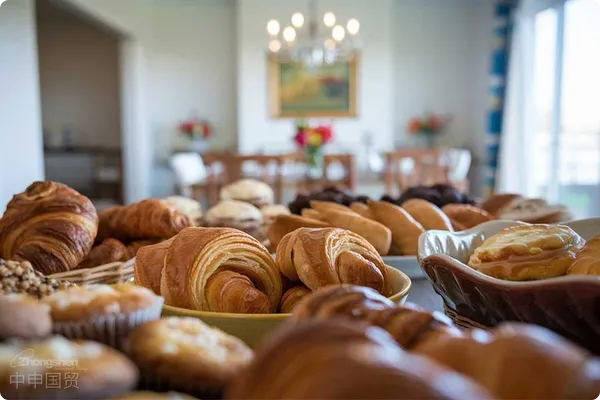
III. Import Process of Pastries
Registration of Overseas Manufacturers
The overseas manufacturers of imported foods shall submit a registration application to the General Administration of Customs either by themselves or through an agent, and submit the corresponding application materials. The registration application can be completed by logging into the Registration Management Application System for Overseas Manufacturers of Imported Foods, and can also be accessed through the standard - version application of the Single Window of China International Trade.
The list of enterprises that have obtained registration in China can be queried through Registration Information of Overseas Manufacturers of Imported Foods:Query link.
Filing of Food Importers
Food importers of imported cakes and biscuits need to file at the customs where the enterprise is registered. The filing can be completed through the following three methods:
- Through the Single Window of international trade:Enter the Port Law - Enforcement Declaration module, click Enterprise Management and Enterprise Qualification in sequence. On the new page, select Filing Application, click Filing of Food - related Enterprise Qualifications in sequence, fill in the filing information and upload the relevant application materials.“Through Internet + Customs:
- Enter the Enterprise Management and Inspection module, select Filing of Food Importers, fill in the filing information and upload the relevant application materials.Submit a paper application to the local customs:“You can submit the paper Consignee Filing Application Form (Food) and other relevant materials for filing.
- Filing of Overseas Exporters or AgentsOverseas exporters or agents also need to file. The filing process can refer to the importer filing process, and the filing can be carried out through the Single Window of international trade or Internet + Customs. According to the customs notice, before September 5, 2024, overseas exporters or agents of imported foods that have been filed with the customs will be assigned an 18 - digit unified code, and the original enterprise filing number will no longer be used.
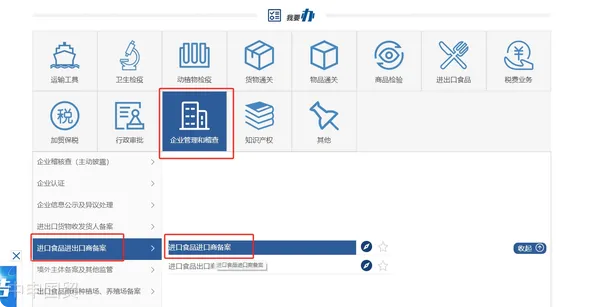
Import Stage
The importing enterprise or its agent shall submit the materials required for customs declaration to the customs. The customs will implement a series of inspection and quarantine measures on imported foods, such as document review, physical inspection, label inspection, sensory inspection, sampling and inspection. If the cakes meet the relevant standards and requirements, the customs and inspection and quarantine departments will conduct a conformity assessment and issue an Inspection and Quarantine Certificate for Entry Goods (i.e., health certificate) for the qualified imported cakes. The importer can sell the cakes in the domestic market with this certificate.
Establishment of Import and Sales Record System
According to Article 98 of the Food Safety Law of the Peoples Republic of China, importers must establish an import and sales record system for foods and food additives, and record in detail the name, specifications, quantity, production date, production or import batch number, shelf - life, information of overseas exporters and purchasers, etc. of foods and food additives, and keep the relevant vouchers. This is to ensure the traceability of products and guarantee food safety.
Establish Import and Sales Record System
According to Article 98 of the Food Safety Law of the Peoples Republic of China, importers must establish an import and sales record system for food and food additives, detailing the name, specifications, quantity, production date, production or import batch number, shelf life, information of overseas exporters and purchasers, etc., and retain relevant documentation. This ensures product traceability to guarantee food safety.
Summary
Although importing pastries involves multiple steps and strict safety standards, as long as you carefully follow the relevant regulations and meticulously prepare every aspect, successful customs clearance is just around the corner. Through the detailed guide in this article, you will have a comprehensive understanding of the definition, standards, and procedures for importing pastries, avoid common misunderstandings, and ensure that every batch of goods can smoothly enter the Chinese market. We hope this article can provide practical support for your import business and help you stand out in the fierce market competition! If you need more professional advice or assistance, you are welcome to contact ourZhongShen International Tradeexpert team at any time. We will wholeheartedly serve you and help your business thrive!
Related Recommendations
? 2025. All Rights Reserved. Shanghai ICP No. 2023007705-2  PSB Record: Shanghai No.31011502009912
PSB Record: Shanghai No.31011502009912

